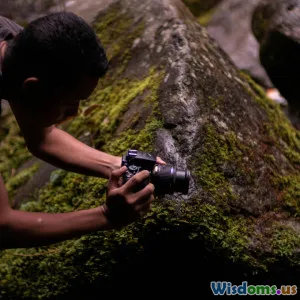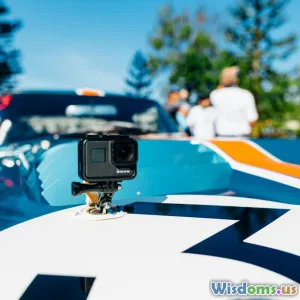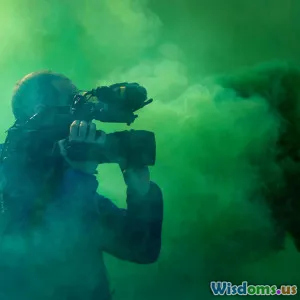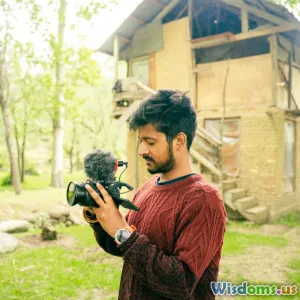
Innovative Techniques for Engaging Documentaries
6 min read Discover innovative techniques that make documentaries compelling and engaging for audiences, enhancing storytelling and viewer connection. (0 Reviews)
Innovative Techniques for Engaging Documentaries
Documentaries have long held a significant place in storytelling, but as the landscape of media consumption evolves, so too must the approaches filmmakers take to engage their audiences. Innovative techniques are reshaping how we convey truths, evoke emotions, and connect with viewers. In this article, we’ll explore some of the most effective methods for creating engaging documentaries that resonate deeply.
1. Interactive Storytelling
One of the most groundbreaking techniques in documentary filmmaking is interactive storytelling. This approach allows audiences to engage with the content in a more personal and immersive way. Through platforms like interactive documentaries and web series, viewers can choose their paths, explore various perspectives, and even influence the direction of the narrative.
Example: Bear 71
Bear 71 is an interactive documentary that allows users to navigate through the life of a bear in the Canadian Rockies. Viewers can explore the environment, view footage from wildlife cameras, and learn about the challenges faced by the bear. This immersive experience not only educates but also emotionally connects the audience to the subject matter, making the documentary feel more personal.
2. Using Virtual Reality (VR) and Augmented Reality (AR)
With the rise of VR and AR technologies, filmmakers are finding new ways to immerse audiences in their narratives. By creating a 360-degree environment, documentaries can transport viewers into the heart of the story, allowing them to experience events as if they were present.
Example: The 360-degree documentary experience
Projects like The Displaced by The New York Times utilize VR to tell the stories of children displaced by war. Viewers can look around the environment, creating a sense of presence that traditional documentaries struggle to achieve. This technique enhances empathy and understanding, as audiences can see the world through the eyes of those affected.
3. Creative Cinematic Techniques
Innovative camera techniques can significantly enhance the storytelling of a documentary. Techniques such as time-lapse photography, drone footage, and long takes can provide a fresh perspective on the subject matter.
Example: Time-lapse in Documentaries
In documentaries like Planet Earth II, time-lapse photography captures the beauty of nature in a way that is both stunning and informative. This technique allows viewers to witness changes over time, creating a deeper appreciation for the subject matter and the environment.
4. Personal Narratives and Storytelling
Engaging documentaries often center around personal stories that resonate with viewers. By focusing on individual experiences and emotions, filmmakers can create a strong connection to the audience.
Example: Won’t You Be My Neighbor?
This documentary about Fred Rogers takes a deeply personal approach, combining interviews, archival footage, and personal anecdotes that evoke nostalgia and emotion. By framing the narrative around Rogers’ kindness and impact, the film resonates deeply with viewers of all ages.
5. Utilizing Social Media for Engagement
Social media platforms are invaluable tools for documentary filmmakers. They allow for real-time engagement with audiences and can serve as a platform for discussion and promotion.
Example: Documentaries on Instagram
Filmmakers are now using Instagram to share short clips and behind-the-scenes content, creating a buzz around their documentaries. Hashtags, stories, and IGTV are effective ways to engage with potential viewers, discuss themes, and build a community around the documentary.
6. Incorporating Data Visualization
Data visualization can enhance understanding and engagement, making complex information more accessible to audiences. Employing infographics, animated charts, and visual data representation can help convey important messages compellingly and understandably.
Example: Our Planet
In Our Planet, data visualization is used to inform viewers about environmental issues, such as climate change. By presenting information visually, the documentary ensures that the audience not only understands the gravity of the situation but is also engaged with the content.
Conclusion
As the landscape of media consumption continues to evolve, documentary filmmakers must embrace innovative techniques to engage their audiences effectively. By incorporating interactive storytelling, utilizing VR and AR, employing creative cinematic methods, focusing on personal narratives, leveraging social media, and incorporating data visualization, filmmakers can create compelling documentaries that resonate with viewers on multiple levels. These techniques not only enhance storytelling but foster a deeper connection to the subject matter, ensuring that the documentary medium remains relevant and impactful in a rapidly changing world.
Rate the Post
User Reviews
Popular Posts





















